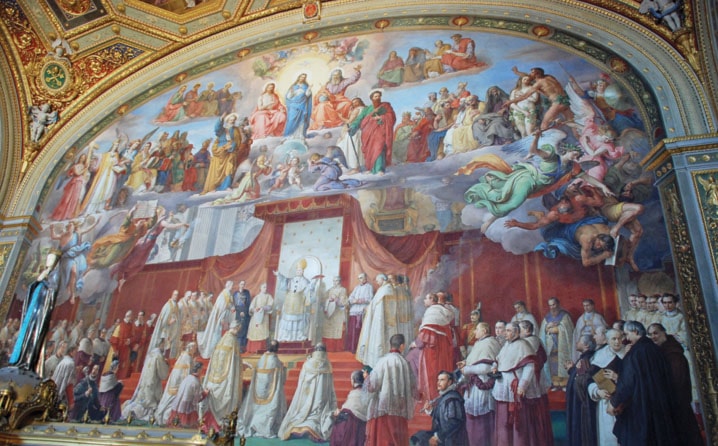Sometimes, seeing is believing.
I never really appreciated Picasso’s famous art works until I visited the Picasso Museum in Barcelona, Spain, a few years ago. Located in five adjoining medieval palaces in the Gothic section of the city, the museum does not contain very many of his most important works, but rather an extensive collection of his early works that were completed while he lived in Barcelona during his formative years.
When you see the paintings he created as a youth, it’s easy to recognize the genius of Picasso as an emerging artist.
Likewise, I never fully appreciated Michelangelo’s statue of David until I sat in Florence’s Galleria dell’Accademia and spent time really looking at it. And though I had seen reproductions in books of his Sistine Chapel, words can’t quite describe the sense of awe I felt as I gazed up at the work that took four years to complete and almost cost Michelangelo his sight.
A museum can be a destination in itself — a place to learn about the world and ponder ones place in it. Some people claim to find museums boring. But if you love learning, it’s hard not to enjoy a visit to a great museum.
Choosing the top five art museums in Europe is something akin to selecting the top five hockey players of all time. It’s an issue that is definitely debatable. Some of the top museums with the most artistically rich collections in the world can be found in Europe, so there is a plethora of possibilities.
Here are my picks for Europe’s top five art museums. If you haven’t visited some of these institutions, you may want to put them on your bucket list. If you feel there is a museum that ought to be on the list, make a comment on the Advocate website or send us an email to let us know which art museums are on your top five list.
Louvre — Paris, France
Perhaps the world’s greatest art museum, the Louvre was a royal palace until the French Revolution, when it became home to the republic’s art collection.
With 675,000 square feet of works, it is easy to get lost in the Louvre.
The Big Three pieces that should not be missed are Mona Lisa, Winged Victory and Venus de Milo. Beyond that, it is best to focus on whatever interests you most.
You could spend days exploring the Louvre, but a 90-minute guided tour or the new Nintendo audio/video guides can help you get more out of it. (www.louvre.fr/en)
The Vatican Museums — Rome, Italy
When in Rome, a visit to the Vatican Museums is a must — regardless of your religious affiliations.
The museums are part of the Vatican Palace, the official residence of the popes since 1377 and the palace consists of some 1,400 rooms, chapels and galleries.
Besides Michelangelo’s Sistine Chapel, visitors should not miss the Raphael Rooms, the great antique sculptures and the Old Master paintings such as da Vinci’s St. Jerome.
Of the subsidiary museums, the Egyptian museum is a personal favourite.
If you book your visit in advance online, you can skip the huge lineup to get inside (http://mv.vatican.va).
Galleria dell’Accademia & Galleria degli Uffizi — Florence, Italy
In choosing two museums in the same city, I realize that I have cheated a wee bit in my top five list, but both of these museums are a must-see for any visitor to Florence and they share the same official website.
The Accademia has a fine collection of Florentine paintings dating from the 13th to the 18th centuries, but Michelangelo’s statues are the real highlight of this museum. The statue of David is the most famous piece in the museum and worth the price of admission, but another personal favourite is an unfinished statue Michelangelo called Slaves.
The Uffizi Gallery houses an incredible collection of art by great masters such as Botticelli, Michelangelo, Titian, Raphael and many others in its 79 rooms.
Lineups are notoriously long at both museums, so do yourself a favour and reserve your tickets in advance to avoid the lineup (www.uffizi.com).
Museo del Prado — Madrid, Spain
Housing an amazing collection of art gathered by the Spanish Royal family, The Prado’s real jewels are its Spanish masterpieces.
The works of Goya, Velázquez, and El Greco should not be missed, but the museum also holds masterpieces by Flemish, Dutch, German, French and Italian artists. Two of El Greco’s greatest paintings, The Resurrection and The Adoration of the Shepherds are must-see pieces in this museum. Goya’s “black paintings” are dark, disturbing works that he created later in life when he was experiencing great inner turmoil. Though they are somewhat disturbing, they should not be missed either.
Admission to the museum is free after 5 p.m. each day. Don’t be intimidated by the lineup for free admission, it moves quickly (www.museodelprado.es/en/) .
The National Gallery — London, England
Situated on the north side of Trafalgar Square, London’s National Gallery is home to one of the world’s great art collections and the best part is a visit to the gallery is free.
There are more than 2,300 masterpieces on display, including works from great masters such as van Gogh, Michelangelo, da Vinci, Monet, Picasso, Rembrandt, Botticelli, Rubens, Bellini, Turner and many more. From medieval masters to French impressionists, a visit to the museum will allow you to view an incredible collection of works.
Consider taking in a free lunchtime lecture highlighting the story behind one of the museum’s key pieces or if you are visiting with children, take in Family Sunday, when the museum puts on special programs for young visitors and their families (www.nationalgallery.org.uk).
Debbie Olsen is a Lacombe-based freelance writer. If you have a travel story you would like to share or know someone with an interesting travel story who we might interview, please email: DOGO@telusplanet.net or write to: Debbie Olsen, c/o Red Deer Advocate, 2950 Bremner Ave., Red Deer, Alta., T4R 1M9.
